
table of contents
- Characteristics
- care
- Location
- plants
- to water
- Fertilize
- Cut
- Multiply
- Diseases
- Pests
Profile and care information open +conclude -
- Flower color
- White
- Location
- Shade, partial shade, sunny, full sun
- Heyday
- June July
- Growth habit
- upright, bushy, perennial, subshrub, dwarf shrub, creeping
- height
- 60 centimeters up to 7 meters high
- Soil type
- stony, sandy, loamy, gravelly, clayey
- Soil moisture
- moderately dry, fresh
- PH value
- neutral, slightly acidic, alkaline
- Limescale tolerance
- Calcium tolerant
- humus
- rich in humus
- Poisonous
- Yes
- Plant families
- Olive family, Oleaceae
- Plant species
- Hedge plants, bedding plants, container plants, balcony plants
- Garden style
- Hedge garden, cottage garden, natural garden, terrace garden
The common privet is very popular as a predominantly evergreen hedge and as a solitary plant it decorates garden beds, terraces and balconies tastefully. It shows itself to be very resilient in many areas and is characterized by a high level of tolerance even in the case of care errors. But for dense, vigorous growth, you should still follow Plantopedia's planting and care tips.
Characteristics
- Name: privet
- Common names: common privet, rain willow, octopus, dogwood, privet hedge
- scientific name: Ligustrum vulgare
- Plant family: Oleaceae
- Height: depending on the variety between 60 centimeters and seven meters
- Flowering period: June to July
- Fruits: blue-green to black berries (poisonous)
- Location: sunny to partially shaded
- Lime tolerance: loves lime
- Winter hardy to minus 15 degrees Celsius
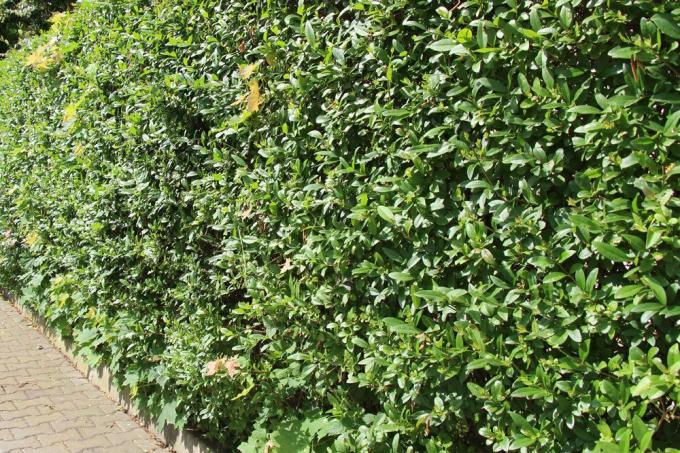
care
In summer, the privet delights with its blooming flowers and in winter, as an evergreen specimen, it brings color to dreary gardens or balconies. It is available in different varieties and does not make any above-average demands on its care or its location. If you pay attention to a few details, the Ligustrum vulgare will reward you with dense foliage and health for many years to come.
Location
The inkberry bush is very flexible when it comes to light. It even gets along well in a mostly shady spot, although this can have negative effects on bud growth the darker the privet hedge is.
Otherwise, the location should meet the following conditions:
- Light conditions: full sun to sunny
- tolerates partial shade with few hours of sunshine
- Temperatures: from minus 15 degrees Celsius to hot summer temperatures
floor
If you put the Ligustrum vulgare in soil that has been enriched with compost, it will be satisfied with almost any garden soil. If you want to do your good and encourage healthy, vigorous growth, the soil should have some properties.
- calcareous
- loamy-sandy, gritty-loamy or clay-sandy
- loose and permeable to water
- dry to well moist
- pH value: between 5.0 and 7.5
Substrate
If you are planning to plant your common privet in a bucket, you shouldn't use traditional garden soil use, but put them in a nutrient-rich substrate that also has the properties given above owns. It is important that the substrate has a certain looseness, which can be achieved, for example, by perlite.
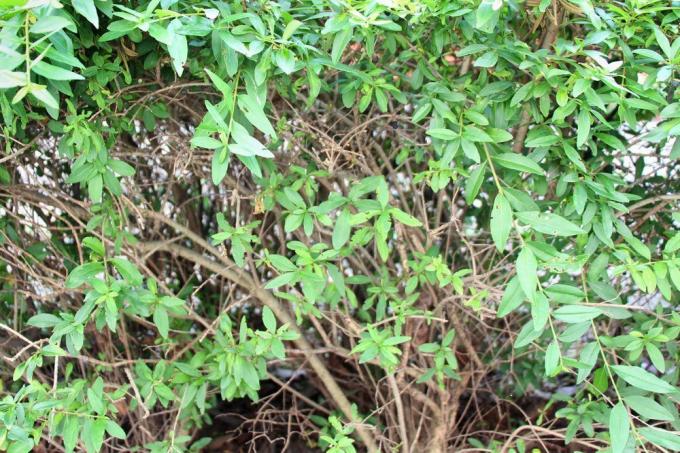
plants
In order for the Rainweide to develop well, a few points must be observed when planting.
- Plant hole depth: about 15 centimeters deeper than the length of the plant ball
- Plant hole diameter: twice as wide as the ball diameter
- Plant spacing: for hedge heights of one meter, 30 centimeters - higher than one meter, 50 to 60 centimeters
- Loosen the soil well
- Fill the bottom of the planting hole with two centimeters of gravel, clay or quartz sand (drainage)
- Put soil enriched with compost on the drainage
- Place the plant in the planting hole (pay attention to the central and straight alignment)
- Mix the remaining soil with compost and close the planting hole
- Press / step on the earth well
- pour vigorously (avoid waterlogging)
Bucket cultivation
When cultivating in a tub, proceed in a similar way to planting in the garden soil. Here, too, drainage is essential. You can do without enrichment with compost if you use nutrient-rich substrate. The tub should be at least twice the size of the plant ball. Since the privet can grow up to 40 centimeters per year under optimal conditions, the bucket can also be selected larger if you want to avoid repotting more often.
Best planting time
The best time to plant the privet depends primarily on the outside temperature. Autumn is an ideal time to plant. The prerequisite, however, is that there is neither ground frost nor is it imminent. As this is often difficult to assess because the temperatures have changed from one day to the next in recent years. For this reason, planting Ligustrum vulgare in spring is more optimal if you don't think about it until late autumn. But it should be planted in April. Since it needs a lot of water, planting in summer is not recommended.
to water
The Ligustrum vulgare tolerates drought as well as continuous moisture. In winter it usually does not need any additional water because the mostly higher humidity paired with snow and rain are usually sufficient. In spring and autumn, it depends on what the weather conditions are like. Usually the occasional watering does not have to be started until the end of April / beginning of May. From October and with increasingly lower temperatures, you can usually stop watering.
In summer, however, especially on very hot days, the privet hedge's water requirement peaks. A dried-out soil will not do you any harm for a day or two, but constant moisture promotes growth and especially the duration of flowering. You can tell when to water if you can press your thumb less than an inch into the surface of the earth.
Calcareous irrigation water
While many crops cannot tolerate calcareous irrigation water, privet is a real lover of lime. Not only can you use ordinary tap water for watering, you should use it. But limit yourself to watering the soil and do not wet the leaves or flowers. Calcareous water can cause unsightly leaf lightening and cause flowers to wither more quickly. If you are already fertilizing lime, it is advisable not to add any additional lime in the irrigation water.
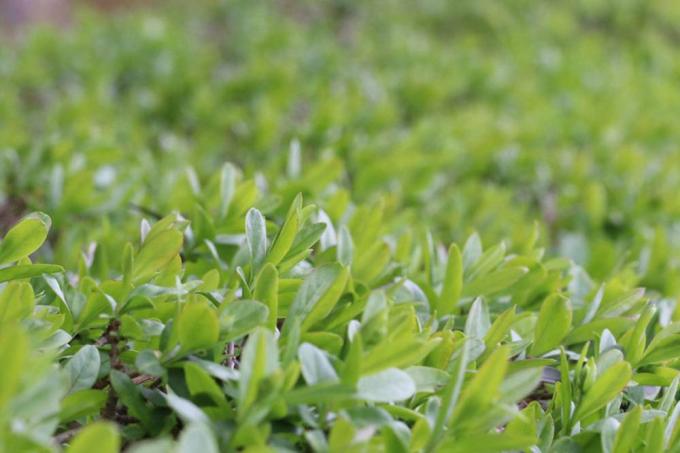
Fertilize
Theoretically, the Ligustrum vulgare does not need any additional fertilizer. But with the right fertilizer and optimally chosen fertilizer rhythms, you can help her in the best possible way develop, bloom for a long time and become even more resistant to care errors, diseases and pests will. With a privet hedge in particular, you promote an opaque foliage with the fertilization. When fertilizing you should follow the instructions below.
- Type of fertilizer: Coniferous fertilizers, fertilizers with long-term or short-term effects such as green or blue grain
- Fertilizing times: in March before the start of growth and short-term fertilizer again in August
- Fertilizer amount: always strictly follow the manufacturer's instructions in order to avoid over-fertilization
- Additional fertilization: fertilize some algae lime in May and October
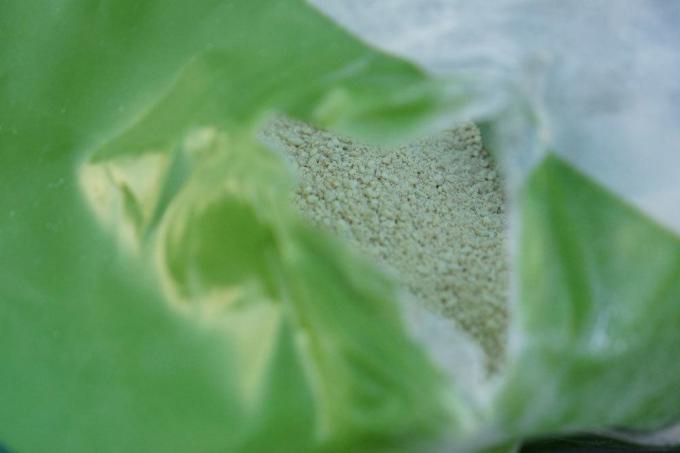
NOTE: Young plants are only fertilized from the third year of life.
Cut
When, how often and how you should cut a privet depends on the reason for the cut. You can choose from various types of cuts, which are listed below.
- Topiary of a privet hedge: two to three times a year in spring, summer and autumn
- Clearance section: every two years in the spring before growth begins
- Radical cut: only if absolutely necessary and if possible shortly before or during frost
- for size regulation: if necessary from spring to autumn before the onset of frost
- Care cut: Shorten by ten to 15 centimeters once a year before or after flowering
If you see dried up shoots and leaves or withered flowers, you should cut them off quickly and completely. Although the privet has only a relatively low nutritional requirement, dead parts of the plant unnecessarily draw nutrients that could then be missing elsewhere. In the case of a privet hedge, in particular, light areas can develop, which have a negative effect on privacy protection.
TIP: Cut immediately after flowering, prevent berries from growing afterwards. Since these can be toxic, it is recommended if you have pets or small children in the household.
Cutting tool
It is advisable to use an electric hedge trimmer to shape a privet hedge. With this, shoot tips can be shortened easily without much effort and a straight line can be realized more optimally.

For thicker woody parts of the privet hedge, you may need pruning shears. Using a saw or knife would increase the risk of leaving frayed wound edges. Water can collect in these and cause mold and fungal infestation. When cutting, make sure that you only use previously disinfected cutting tools to avoid the transmission of pathogens and pests to the Ligustrum vulgare.
Overwinter
The Ligustrum vulgare is one of the few Mediterranean plants that can look forward to the cold season with serenity. It can withstand temperatures of at least minus 15 degrees Celsius over a longer period of time without any problems. As a rule, she does not show signs of frostbite. Accordingly, special preparations or transplanting into a warmer winter quarters are not necessary if the privet is planted in the garden soil.
Ligustrum vulgare planted in pots are slightly more sensitive. You should cover them with a fleece or a bag textile if icy temperatures are expected. Otherwise, the mini specimens and young plants in particular could get frostbite because the tub could freeze completely. From September onwards there will be no more fertilization and from now on you will have to water less and less. But be careful with the evergreen privet hedges and specimens planted as solitaires. If the winter stays quite dry, you have to water occasionally, otherwise they will die if they stand too long in the dry earth.

Multiply
If you want to increase your privet hedge stock, it is a good idea to multiply, which you can do easily and without problems even as an inexperienced hobby gardener. There are two different methods to choose from. The following instructions describe how to proceed when propagating the privet.
Cuttings
The best time to propagate using cuttings is early autumn or late spring. It is important that no frost exists or is not expected. Both green and lignified and thicker shoots are suitable for the endeavor where you should proceed as follows.
- Cut off shoots between 15 and 20 centimeters in length - do not break them off
- Remove all but the top one or two pairs
- Immediately insert cuttings at least two-thirds into the ground
- If necessary, press a wooden stick into the earth to stabilize it and fix the cuttings to it
- the fixation must not be too tight to avoid incision wounds
- Keep a planting distance of ten to 20 centimeters for a privet hedge
- pour generously (avoid waterlogging)
- pour evenly (depending on weather conditions about every other day)
- after about ten weeks, pinch the tip of the shoot regularly (shorten slightly so that it grows bushier and wider)
- Young plants are only fertilized from the third year of life
Sinker
With this method, you indirectly use a cutting of the Ligustrum vulgare, but you do it differently by leaving the shoot on the mother plant and creating roots there, as follows described.
- choose a shoot that is close to the ground
- Remove all leaves except the top one
- score the outside of the shoot lengthways with a sharp knife
- Carefully bend the shoot with the incised side on the ground
- Dig a hollow about five centimeters deep in the earth and place / sink the shoot into it
- Let the tip of the shoot protrude from the ground and cover the rest well with soil
- If necessary, fix the shoot with wire and water it generously and regularly
- as soon as leaf growth appears at the tip of the shoot, the shoot can be dug up
- separate from the mother plant
- Put vertically about two thirds into the earth at the place of destination
- continue as described under "Cuttings"
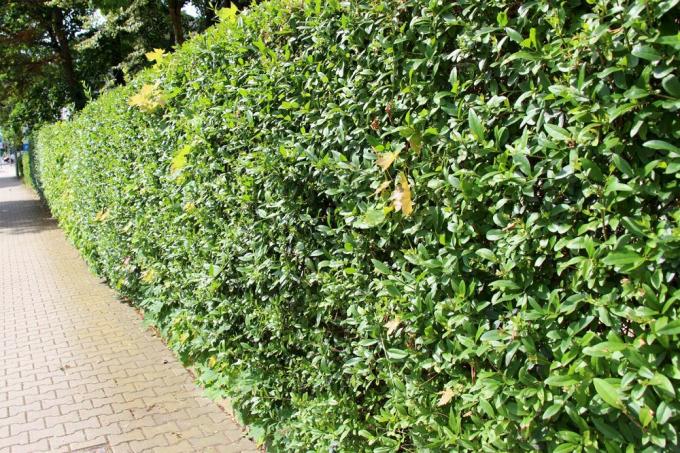
Diseases
As a rule, the privet is a very robust and resistant plant. Usually they weaken mistakes in care, so that they become more susceptible to diseases or pathogens are transmitted via, for example, infected cutting tools. One of the most common diseases is powdery mildew. The fungal infection occurs mainly in dry humidity and warmth.
Powdery mildew
- white, flour-like spots on leaf tops, shoot tips and buds
- rolled up leaves in the advanced stage
- restricted growth especially of the buds / flowers
Fight:
You can use a special fungicide to combat it, such as COMPO BIO mildew-free Thiovit Jet. With the following home remedy, the fight also works.
- Mix 100 milliliters of skimmed milk with 600 milliliters of lime-free water
- Sprinkle privet with it every fourth day
- can be used preventively during normal care
Pests
Aphids
Aphids are not uncommon in gardens. Because they multiply quickly, swift action is essential.
Typical signs of an aphid infestation are:
- stunted and curled leaves
- green, white, yellow, black or brown animals on the underside of the leaves and / or stems / stems
- yellow spots on the leaves
- sticky leaf coating
- sloping buds
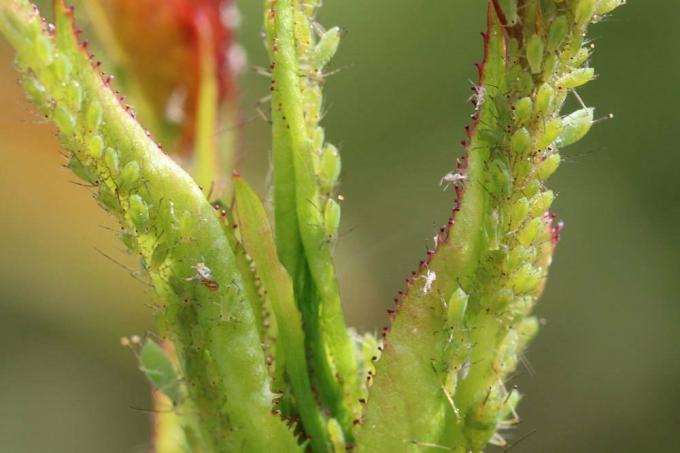
Combat:
The most effective are insecticides with neem oil. Fighting with soapy water is environmentally friendly.
- Make highly concentrated soapy water from soft soap and water
- Fill into a spray bottle and spray privet with it so that it is dripping wet (don't forget the underside of the leaves)
- Repeat every two to three days if necessary until there are no more aphids
Vine weevil
No matter how well cared for it, black weevils can now and then settle on the Ligustrum vulgare.
You recognize these:
- holey leaves
- pitted leaf margins and sometimes buds
- an inch long black beetles
- are usually only active at night
- weakened growth
- Flowering decreases or does not occur
Combat:
The easiest way to control it is to collect the beetles. However, this only works if the infestation is manageable. If the privet is heavily infested, and especially in a large privet hedge, it is advisable to use a so-called nematode product, such as that offered as a nematopus. These are microscopic nematodes.
